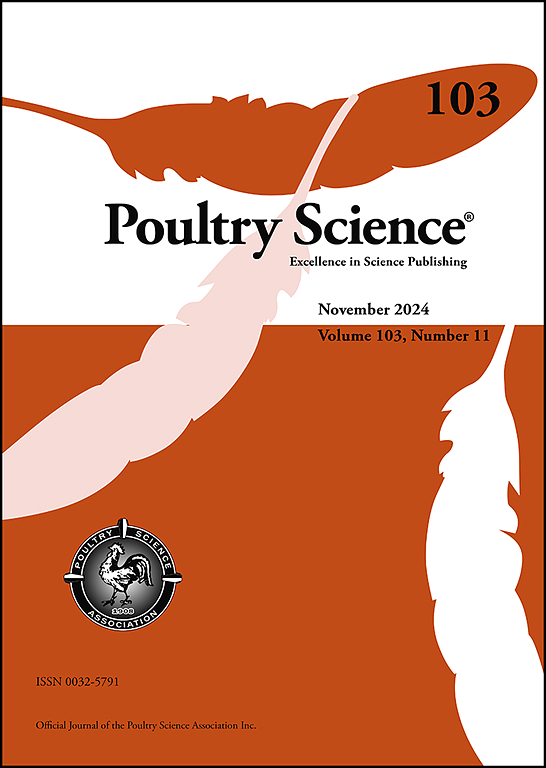Genetics of gait score in broilers: Genetic parameters of gait score in purebred broiler lines
IF 3.8
1区 农林科学
Q1 AGRICULTURE, DAIRY & ANIMAL SCIENCE
引用次数: 0
Abstract
Leg health assessment is a vital component of poultry breeding goals; it includes a range of skeletal disorders and contact dermatitis traits as well as a general assessment of a bird's walking ability in the form of gait score (GS). If trained scorers are used, GS correlates well with more objective walking assessment methods and allows for high throughput data collection from large numbers of individuals. The paper describes for the first time GS heritabilities for broilers. The Aviagen GS system (AGS) consists of an 8-class scale of 10–45 in increments of 5, whereby 10 is the best score and 45 the worst. It has sufficient variation between categories to enable a clear distinction of GS classes for selection purposes. The results of GS at 4–5 weeks of age show GS heritabilities between 0.14 and 0.24 which is higher than turkey (0.08–0.13) or duck (0.06–0.12) heritabilities. Genetic correlations with body weight and breast percentage were unfavorable but moderate. Correlations among leg health traits (AGS, long bone deformities, crooked toes, hockburn and footpad dermatitis) were generally low (–0.16–0.10) for most traits and lines. While genetic correlations between AGS and production traits were unfavorable, both AGS and other leg health and production traits can be improved simultaneously in a multi-trait selection strategy combining production and welfare characteristics. AGS has been included in the Aviagen breeding goal since 2011.
求助全文
约1分钟内获得全文
求助全文
来源期刊

Poultry Science
农林科学-奶制品与动物科学
CiteScore
7.60
自引率
15.90%
发文量
0
审稿时长
94 days
期刊介绍:
First self-published in 1921, Poultry Science is an internationally renowned monthly journal, known as the authoritative source for a broad range of poultry information and high-caliber research. The journal plays a pivotal role in the dissemination of preeminent poultry-related knowledge across all disciplines. As of January 2020, Poultry Science will become an Open Access journal with no subscription charges, meaning authors who publish here can make their research immediately, permanently, and freely accessible worldwide while retaining copyright to their work. Papers submitted for publication after October 1, 2019 will be published as Open Access papers.
An international journal, Poultry Science publishes original papers, research notes, symposium papers, and reviews of basic science as applied to poultry. This authoritative source of poultry information is consistently ranked by ISI Impact Factor as one of the top 10 agriculture, dairy and animal science journals to deliver high-caliber research. Currently it is the highest-ranked (by Impact Factor and Eigenfactor) journal dedicated to publishing poultry research. Subject areas include breeding, genetics, education, production, management, environment, health, behavior, welfare, immunology, molecular biology, metabolism, nutrition, physiology, reproduction, processing, and products.
 求助内容:
求助内容: 应助结果提醒方式:
应助结果提醒方式:


